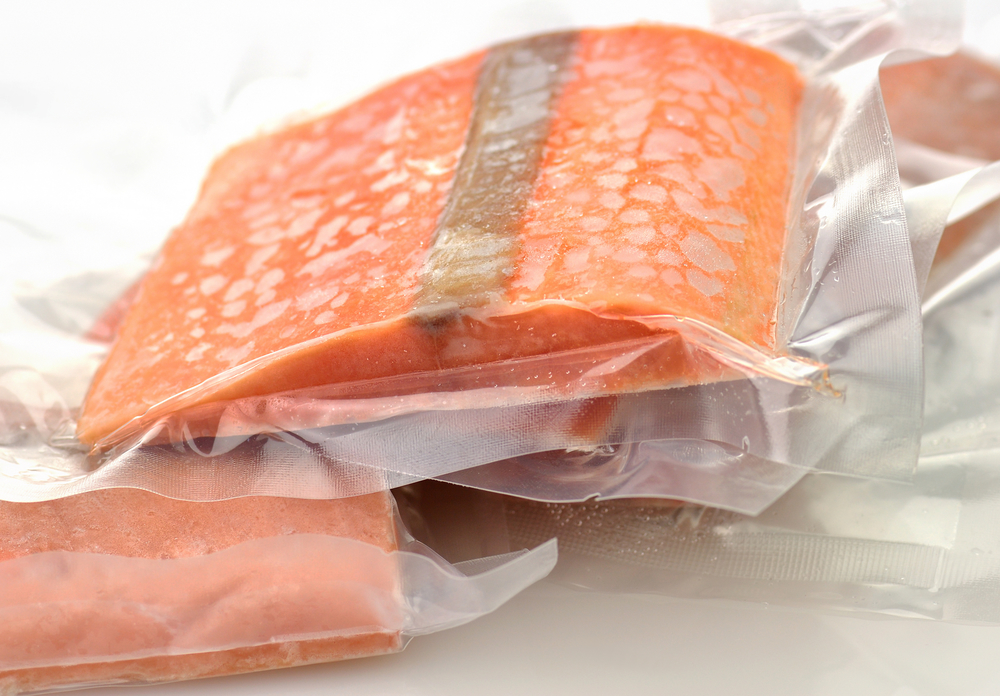

Ice ice, baby. As direct-to-consumer food businesses keep gaining in popularity, people often ask us what the best way to ship frozen food is. Believe it or not, you can ship frozen food as long as you keep your package below 40º Fahrenheit. However, shipping frozen food isn’t always a walk in the park. This process requires special attention when you get your package ready for shipment and generate postage.
Five Steps to Ship Frozen Food
If you’re thinking about shipping frozen food, don’t be nervous. We’ve made a quick five-step guide for you to get started. Just follow these steps below and you’ll be cool! See what we did there?
Choose the Right Carrier and Postage
Speed is the key if you’re attempting to ship frozen food. You may want to expedite your shipment to 1 or 2-day shipping to lower the chance of melting. Every shipping carrier offers different shipping services. However, if you’re interested in shipping overnight, FedEx will be your best bet.
You can even buy special cold shipping packaging from FedEx! These boxes come with a one-time-use chilling unit that you activate and put in the box with your items, making it easy for you to ship frozen food.
Ship on the Best Day Possible
Remember: you’re racing against the clock. If your carrier doesn’t offer weekend shipments, be sure to ship your contents as early in the week as possible. That ensures the quickest delivery to your final destination.
Package Your Items Properly
Packaging can be your best friend and worst enemy when you ship frozen food. That’s why it’s so important to pack your contents as best as you can with the proper packing material. Here are some tips:
- Cool your food before packing. Warm or hot food can create condensation, which may lead to mold buildup or spoiling.
- If possible, place your food in an insulated foam cooler in addition to packaging your shipping box with insulated liners.
- Gel packs and dry ice are the best options for keeping your food cool in transit. In general, you should use dry ice for ice cream and other foods you want to keep frozen. Use gel packs to keep food between 32º and 60º Fahrenheit.
- Gel packs dampen as they thaw, while dry ice stays dry (hence the name). Dry ice is the colder option, but it may not last as long as gel packs.
- If possible, stay away from regular ice! Regular ice is heavy and melts easily, potentially dampening your package.
Think About Possible Melting
When choosing your cooling mechanisms, ask yourself if melting or liquid runoff could be a potential problem when shipping. Trust us: you DON’T want your box to arrive soggy or leaking. Therefore, be sure to bag and package all your products to avoid leaking or guarantee absorption of any melted fluid. We recommend lining the inside of your container with a thick plastic liner. Then, lay an absorbent pad on top of the liner. Finally, be sure to place your frozen food in a watertight plastic bag. If you’re shipping seafood, you can always bag it twice for some extra protection. You can never be too careful!
Think About Hazardous Materials and Carrier Restrictions
If you’re using dry ice, remember that it’s one of the many hazardous materials out there. That means shipping it comes with restrictions. For example, USPS won’t allow you to ship more than 5 pounds of dry ice per package via domestic air transportation (shipping dry ice internationally with USPS isn’t permitted at all). UPS only allows up to 5.5 pounds of dry ice per package via air transportation. FedEx is much more lenient, allowing you to ship up to 200 kg (or about 440 pounds) of dry ice per package.
Shipping dry ice also requires you to label your package with markings that comply with the International Air Transport Association’s (IATA) dangerous goods regulations. Those markings are as follows:
- “Dry Ice” or “Carbon Dioxide Solid”
- “UN 1845”
- Net weight of dry ice in kilograms (1 kg = roughly 2.205 pounds)
- Name and address of the shipper
- Name and address of the recipient
Pro Tip: NEVER place dry ice in an airtight container! Dry ice releases carbon dioxide that can cause pressure to build up until your package bursts…and nobody wants that.
If All Else Fails, Ask Your Carrier
If you’re confused about your requirements, just ask your carrier. All the major shipping carriers will help ensure your package is safely packed, correctly labeled, and properly classified for shipping. If you want more insight on how to pack your perishables, check out FedEx’ guide on packing perishable shipments.


Rhonda Askew
How much does it cause to sent frozen dinner out from GA to Indiana